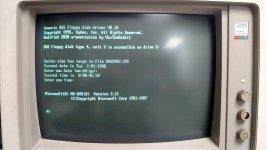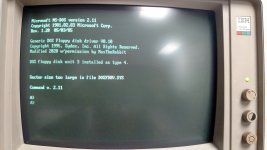Shadow Lord
Veteran Member
It doesn't matter. It's simple enough to write a blocker/deblocker for any sector size (that's a power of 2) and fake 512 byte sectors.
Can't comment on this but if it works as is under MSDOS 6.22 then that would at least be a good start. Also if it is working under DOS 6.22 couldn't the work around for PCDOS 7 break it? I am just asking as I have no idea either way...


